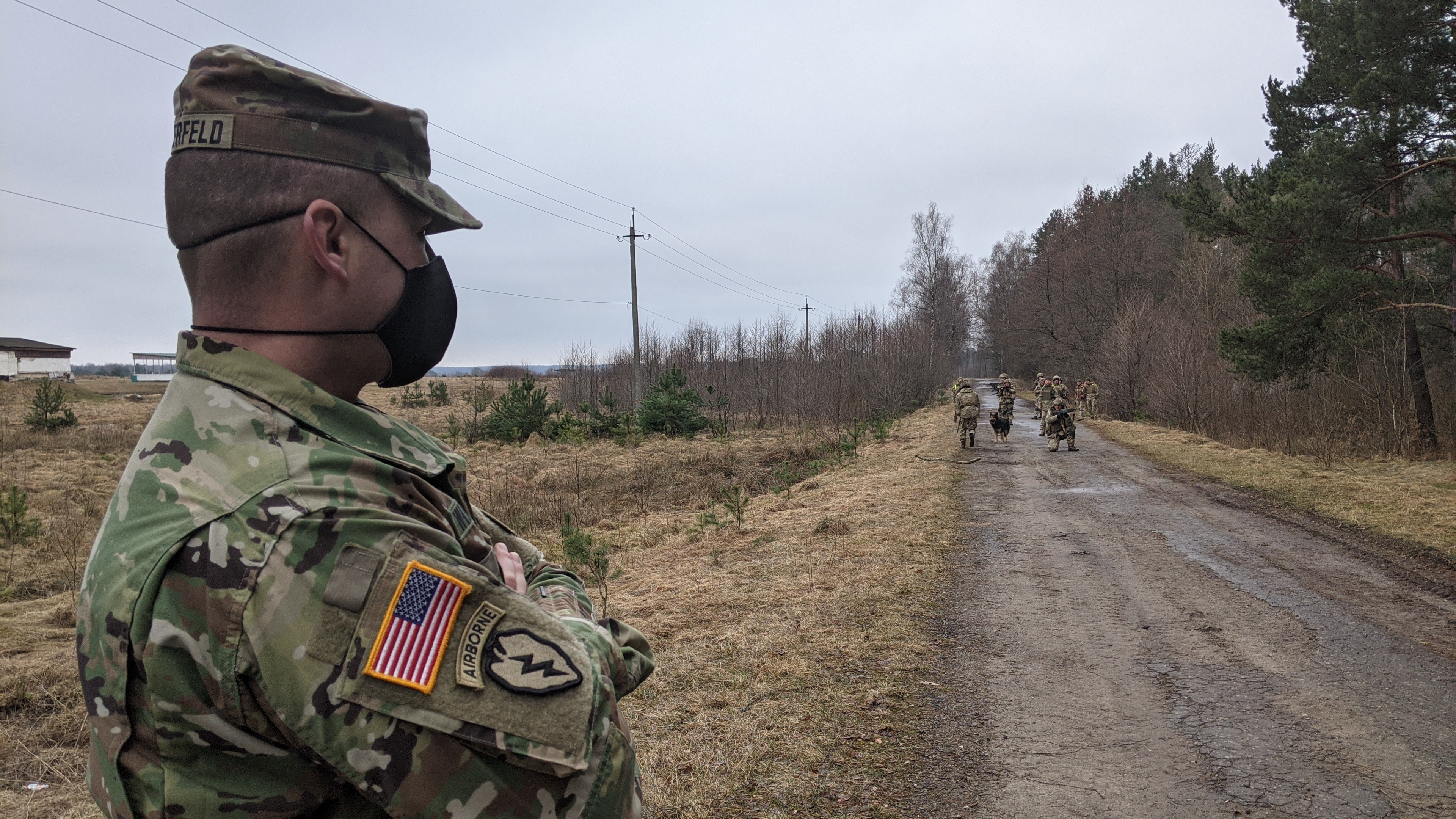
While the current build-up of Russian forces near Ukraine rivals the 2014 annexation of Crimea – when Russia openly backed separatists trying to sever ties to Kyiv – the United States’ top commander in Europe today described the threat of a Russian invasion of Ukraine in the coming weeks as between “low and medium.”
Testifying Thursday before the House Armed Services Committee, Air Force Gen. Tod Wolters said whether the threat will continue to increase after that “depends on the disposition of the forces.”
But as the hearing opened, Russia ratcheted up tensions with Ukraine. Moscow announced that it was closing the Kerch Strait, which connects the Black Sea and Sea of Azov, to “warships and other state vessels” starting next week until October of this year. This action would cut off two major Ukrainian ports from larger operations and throws into question part of the Defend Europe 2021 exercise, which started last month.
In a statement Thursday, the Ukrainian Foreign Ministry said, “Against the background of the ongoing buildup of its military presence along the border with Ukraine on land, Russia has intensified the escalation at sea. It is transferring warships from the Caspian Sea and strengthening its military capabilities in the Azov-Black Sea region. Despite the absence of any legal grounds it has also decided to close this water area for warships of other states, particularly Ukraine.”
Wolters in prepared testimony said “Russia continues to subvert the Ukrainian government through malicious cyber activities, supports illegitimate elections in Eastern Ukraine and remains postured for the use of force in the Black Sea and Sea of Azov.”
Speaking in general terms before a classified session with the panel, he said Russia has moved a “very large ground domain force” near its border with Ukraine and also is displaying a “sizeable” air presence and is increasing its naval presence in the Black Sea. He declined to answer in open session a question on Russian violations of Ukrainian air space in recent weeks and NATO’s response. Later, he said the Russians are modernizing their fleets “in the Baltic, in the Barents and in the Black Sea.”
Laura Cooper, the deputy assistant secretary of defense for Russia, Ukraine and Eurasia, said the United States is working with Ukraine, Bulgaria, Georgia and Romania in the Black Sea to improve those countries’ maritime awareness of activities in their waters. This year’s Defend Europe exercise involving more than 30,000 allied service members was meant to pay special attention to Eastern Europe and the Black Sea. How Russia’s announcement Thursday will impact the exercise is unknown.
News reports this week added that Russia had moved air and missile defense forces closer to the border.
But the Kremlin’s movement of logistical forces necessary to support sustained military operations “has plateaued,” Cooper said.
In her opening remarks, Cooper said “we will continue to support Ukraine” through a special initiative for its long-term security needs. Since 2017, the United States also sent Javelin anti-tank missiles and launchers and armed patrol boats to meet immediate threats in the Donbas region.
Wolters added that the United States sends “rotational training teams in to make sure [the Ukrainians] are proficient” in using these weapons.
Cooper noted that Washington today imposed a new round of sanctions on Russian individuals, organizations and governmental organizations for their “malign activity” in trying to undermine the 2020 American presidential and congressional elections; the Solar Winds insertion of malware into thousands of government, financial and infrastructure networks and continuing disinformation campaigns; and the bullying of its European neighbors like Ukraine and Georgia to destabilize those governments. Ukrainian President Volodymr Zelensky met Turkish President Recep Tayyip Erdogan in Istanbul this week to reaffirm a 10-year strategic partnership between the two countries.
Wolters told the panel that if plans hold, his command will receive two additional destroyers to be homeported in Rota, Spain in 2025 or 2026. “We could still use some more support in regard to undersea activity,” he said. Wolters cited the increased Russian submarine movement in the waters between Greenland, Iceland and the United Kingdom, down to the Mediterranean as the reason for the request.
The deployment of the two destroyers is “absolutely, positively critical,” he said. The four destroyers already there are “the workhorses of deterrence.”
Wolters told the committee that the 81 F-35 Lightning II Joint Strike Fighters flown by the United States and allies in Europe “gives us access to deter effectively anywhere” on the continent and to respond to a crisis if necessary. He added that allies are “incredibly excited” about the aircraft’s performance so far.





